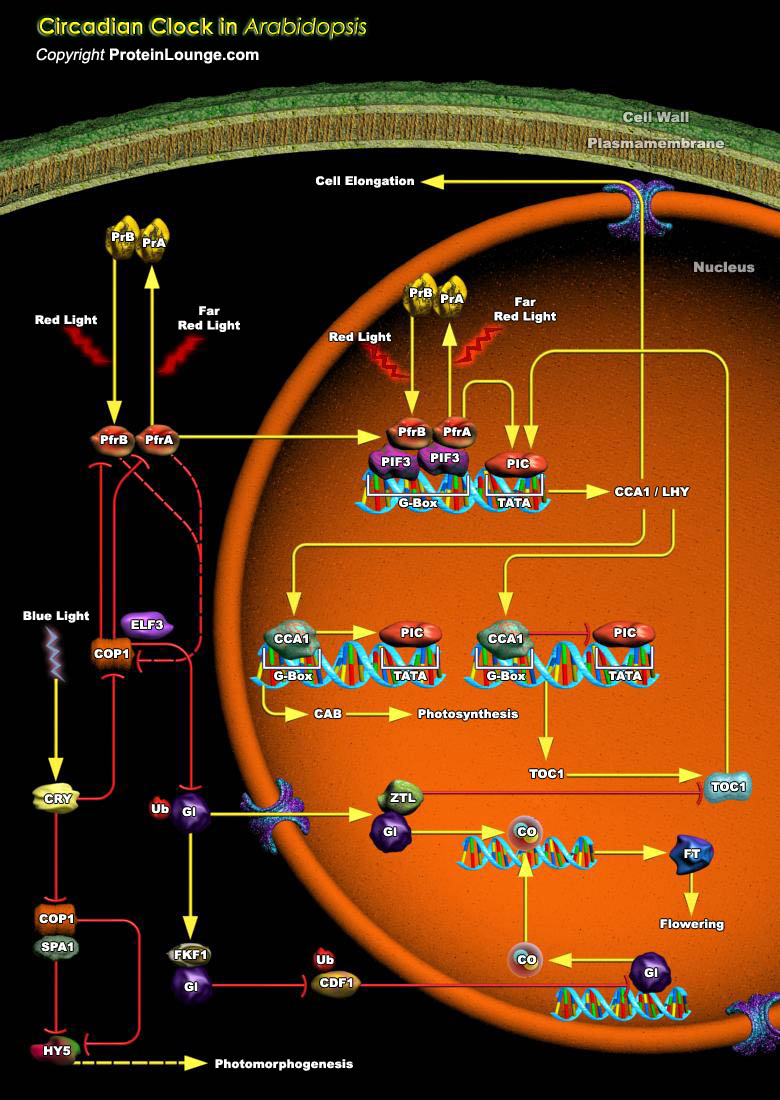
Photoreceptors and circadian clocks are univesal mechanisms for sensing and responding to the light environment. In addition to regulating daily activities, photoreceptors and circadian clocks are also involved in the seasonal regulation of processes such as flowering. Circadian rhythms govern many plant processes, including movements of organs such as leaves and petals, stomata opening, stem elongation, sensitivity to light of floral induction, metabolic processes such as respiration and photosynthesis and expression of a large number of different genes. In plants, phototransduction not only sets the phase, but also affects the amplitude and period of circadian rhythms. Members of the phytochrome family of plant photoreceptors, which can exist in two photochemically[..]
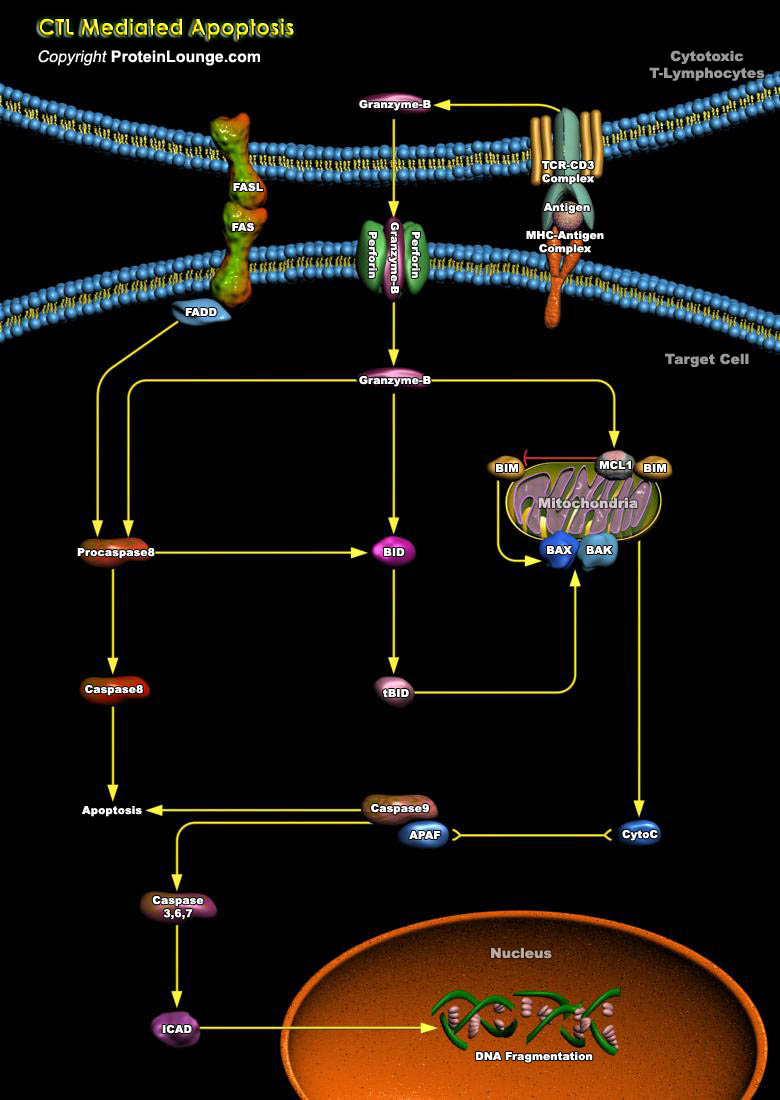
The CTLs (Cytotoxic T Lymphocytes), also known as killer T-Cells are produced during cell-mediated immunity designed to remove body cells displaying "foreign" epitope, such as virus-infected cells, cells containing intracellular bacteria, and cancer cells with mutant surface proteins. The CTLs are able to kill these cells by inducing a programmed cell death known as apoptosis (Ref.1).CTLs only respond to foreign antigen when it is presented bound to the MHC-I (Major Histocompatibility Complex Class-I) expressed on the surface of all cells. The CTLs contain granules composed of proteoglycans to which chemokines are complexed. These granules hold pore-forming proteins called perforins and proteolytic enzymes called granzymes in a protected state. When the TCR (T-Cell[..]
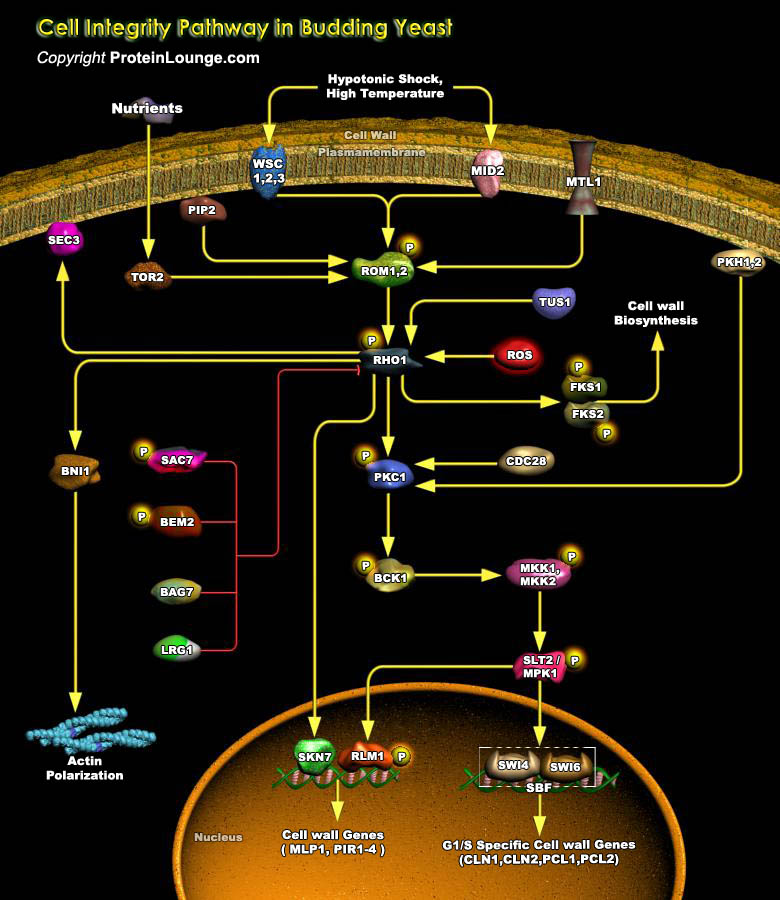
Extracellular environmental changes cause different types of stress in all the organisms and can seriously affect the viability of the cells. All cells have signaling pathways required to transmit the stress signals from outside and to develop the response and gene expression changes required to adapt and survive. Cell Integrity Pathway signaling is activated persistently in response to elevated temperatures, Hypo-osmotic shock, mating pheromone etc. The cell integrity pathway has sensors that detect changes in the cell wall or membrane caused by different stresses and transmit the stimulus to the MAPK (Mitogen-Activated Protein Kinases) cascade. MAPK cascades generally leads to a change of the cell's size or shape and is also important for processes[..]
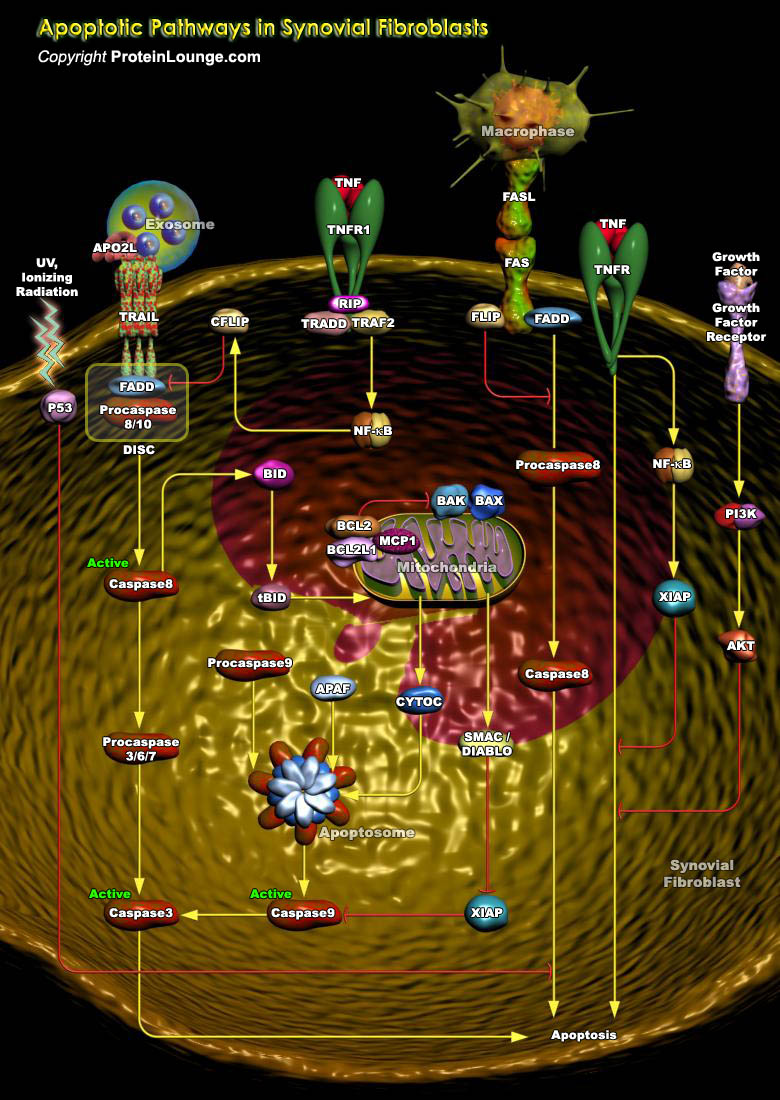
Rheumatoid arthritis (RA) is a chronic systemic autoimmune disease that primarily affects the lining of the synovial joints and is associated with progressive disability, premature death, and socioeconomic burdens.It is characterized by chronic inflammation and synovial hyperplasia that eventually lead to cartilage and bone destruction. Synovial fibroblasts are mesenchymal cells recognized as a key cell population in RA due to their hyperproliferative and hypersensitive properties in the inflammatory milieu and hyperproduction of both inflammatory cytokines and matrix-degrading enzymes.Macrophages are major components in the inflammatory cascade and are also important mediators of joint destruction in RA. Large numbers of macrophages are present in synovial tissue and[..]
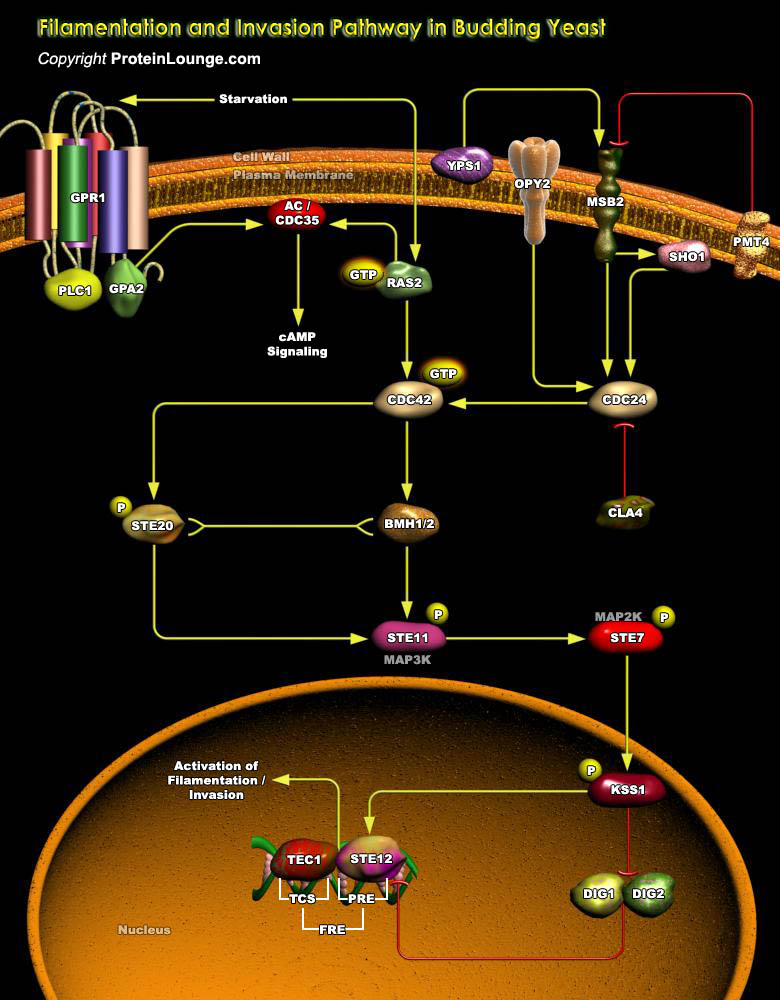
Vegetative yeast cells respond to environmental cues by activating signal transduction pathways that enable them to mount the appropriate physiological response. Each of the cues is dealt with by distinct signaling mechanisms to cause the appropriate response to a given stimulus. In the budding yeast Saccharomyces cerevisae, there are at least five MAP kinase (Mitogen-Activated Protein Kinase) cascades. MAPK cascades are conserved signaling modules that regulate responses to diverse extracellular stimuli, developmental cues and environmental stresses. A MAPK is phosphorylated and activated by a MAPKK (MAPK Kinase), which is activated by an upstream protein kinase, MAPKK kinase. Each pathway is initiated by a distinct upstream regulator and individual MEKK-MEK-MAPK[..]
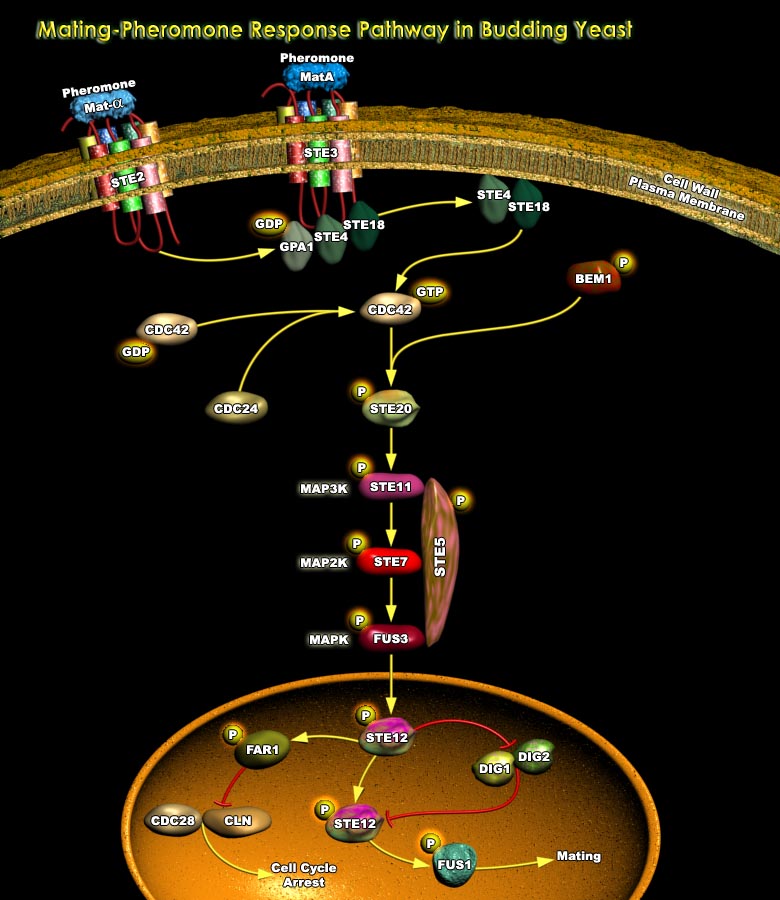
The MAPK (Mitogen-Activated Protein Kinase) cascades play a pivotal role in many aspects of cellular functions, and are evolutionarily conserved from yeast to mammals. In Saccharomyces. cerevisiae, there are five MAP kinase signal transduction pathways that regulate mating, filamentous growth, high osmolarity response, maintenance of cellular integrity, and ascospore formation. The best-defined yeast MAPK pathway in S. cerevisae is involved in the mating of haploid cells. Yeast may exist either as haploid or diploid cells. The haploid cells have two sexual phenotypes characterized by the expression of a set of genes involved in mating that are not expressed in diploids. The mating response to generate diploids is stimulated by the release of small peptide mating[..]
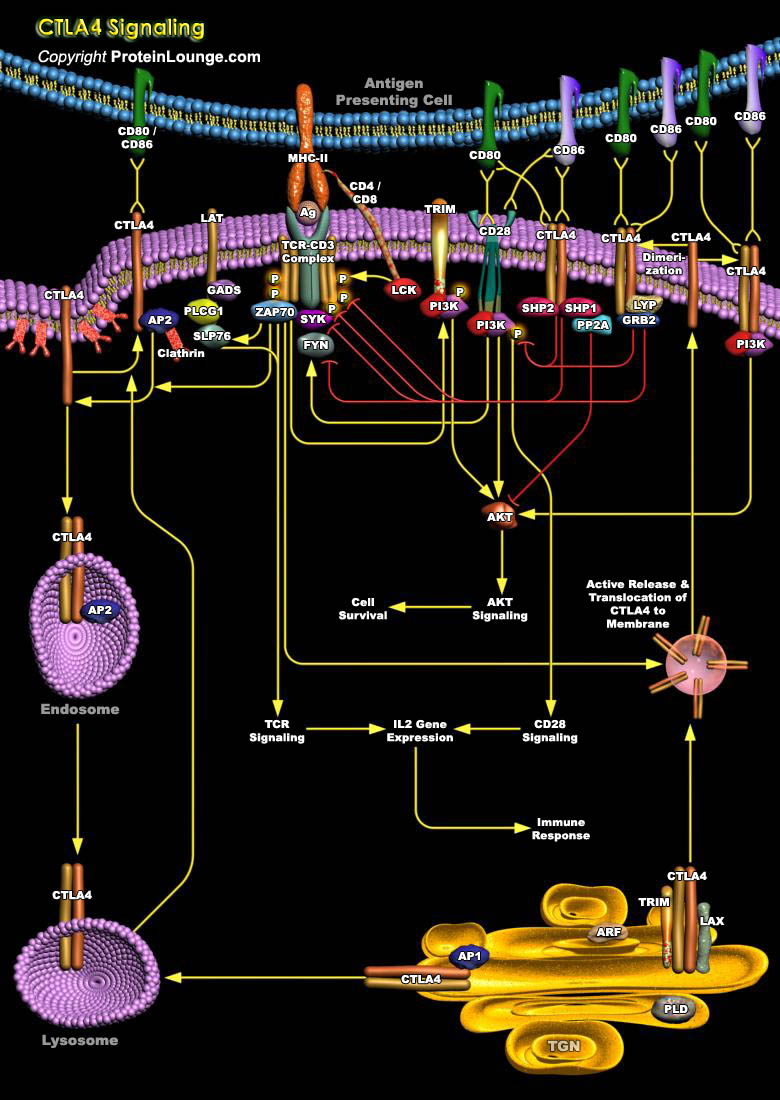
CTLA4 (CD152) is a member of a class of cell surface molecules capable of terminating early events in the receptor-mediated signaling cascade. It is a 41–43 kDa,type 1 transmembrane glycoprotein of the immunoglobin superfamily having 223 amino acids in length. The extracellular architecture of CTLA4 is characterized by a single IgV-like domain containing the B7- 1 (CD80)/B7-2 (CD86) ligand-binding site. Expression of CTLA4 is dependent both on TCR stimulation by the antigens and CD28-B7 engagement. The costimulatory CTLA4 pathway, attenuates or downregulates T cell activation and CTLA4 is designed to remove body cells displaying "foreign" epitope, such as virus-infected cells, cells containing intracellular bacteria, and cancer cells with mutant surface proteins. The[..]
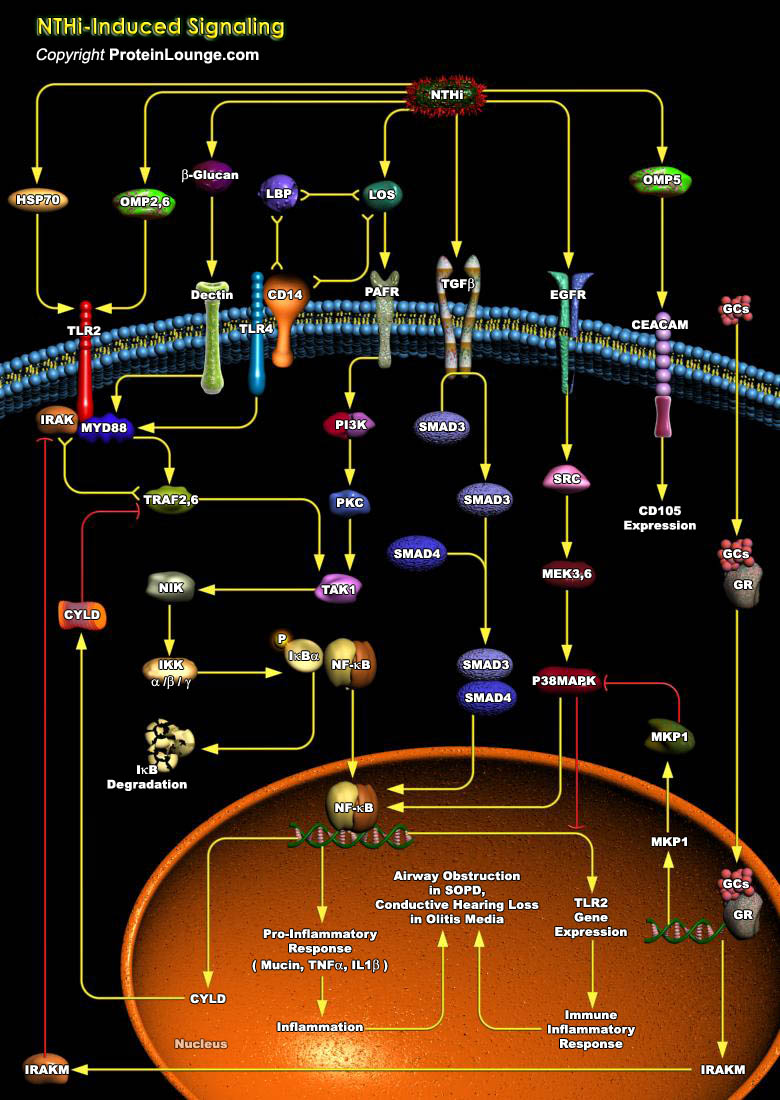
Nontypeable Haemophilus influenzae (NTHi) organisms are small Gram-negative bacteria that colonize the upper respiratory tract of humans beginning at a very early age. NTHi is also a leading cause of otitis media (OM), sinusitis, and community-acquired pneumonia, often following viral respiratory infection. A rising proportion of otitis media caused by NTHi has been attributed to widespread use of the pneumococcal conjugate vaccine, which was introduced in the year 2000 and has reduced the incidence of respiratory infections caused by Streptococcus pneumonia Among adults, particularly among patients with chronic obstructive pulmonary disease (COPD), NTHi infections are a major cause of illness, especially during the acute exacerbations that often characterize[..]
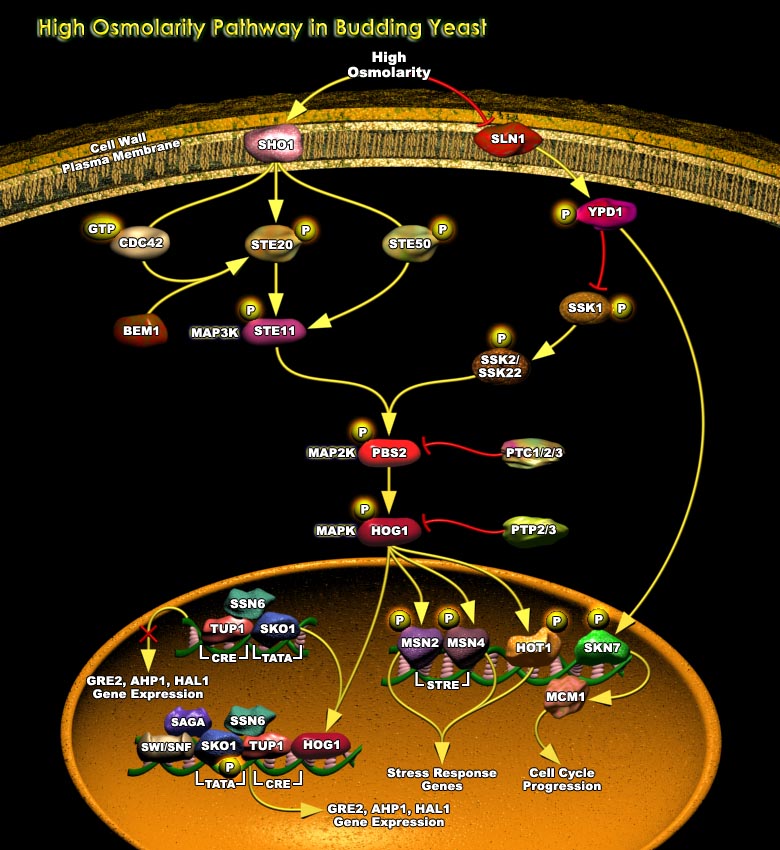
The internal osmolarity of a growing yeast cell is maintained higher than the external osmolarity. The resulting osmotic gradient across the plasma membrane brings in water for cell expansion and creates turgor. Yeast cells are quite resistant to various types of stress including hypertonic stress. This adaptability can be traced to stress-activated signaling pathways that sense the stress condition and activate expression of proteins that resist the toxic effects of the stress and promote survival and eventual cell growth under the new conditions. In Saccharomyces cerevisiae, changes in the osmolarity of the medium have been reported to affect different signaling pathways. The best-characterized signaling system by far involves the MAPK (Mitogen-Activated Protein[..]
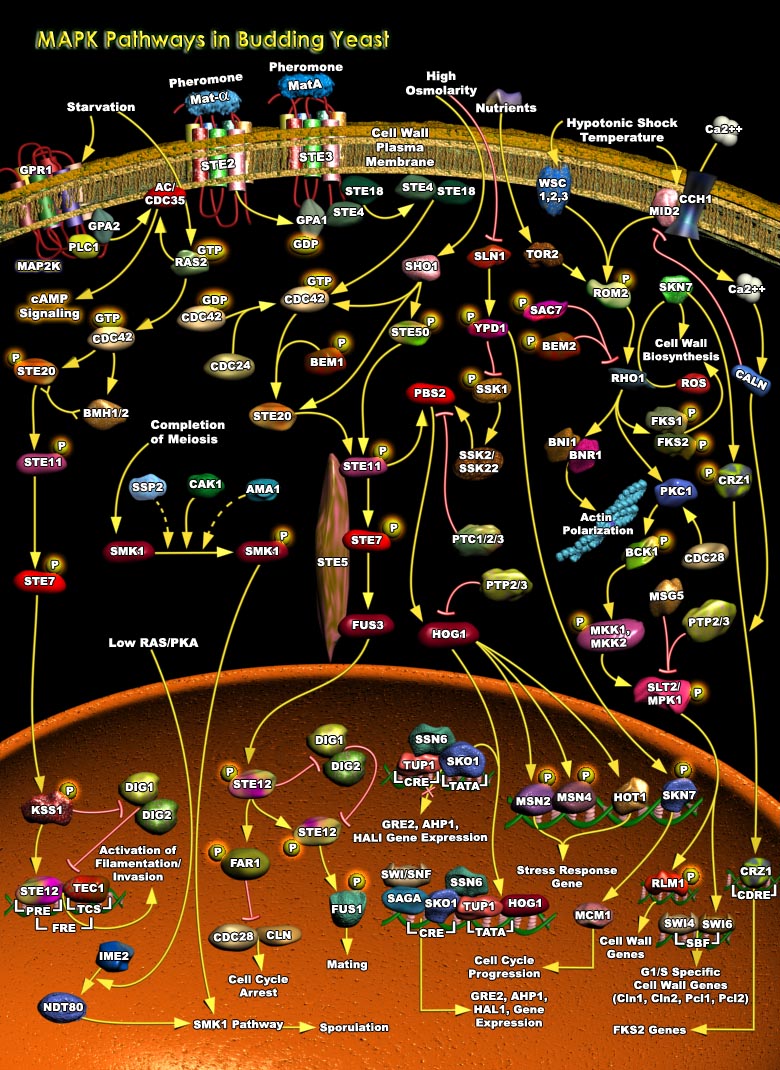
MAPK (Mitogen-activated protein kinases) are serine-threonine protein kinases that are activated by diverse stimuli ranging from cytokines, growth factors, neurotransmitters, hormones, cellular stress, and cell adherence. MAPKs are expressed in all eukaryotic cells. The basic assembly of MAPK pathways is a three-component module conserved from yeast to humans. The MAPK module includes three kinases that establish a sequential activation pathway comprising a MKKK (MAPK Kinase Kinase), MKK (MAPK Kinase), and MAPK. Yeast probably represents the experimental model where the organization and regulation of MAPK pathways are best understood. Presently, five MAPK pathways have been well characterized in the budding Yeast, Saccharomyces. cerevisiae. The four MAPKs present in[..]

Parkinson's disease is a Neurodegenerative disorder characterized by the progressive loss of Dopaminergic neurons in the substantia nigra and the appearance of intracellular inclusions, named Lewy bodies and Lewy neurites in the remaining nigral neurons. The Substantia nigra is located in the midbrain region of the brain. It consists of two parts: the SNc (pars compacta), and the SNr (pars reticulata). The pars compacta produces dopamine and is the part that degenerates in Parkinson's disease. It is the second most common form of neurodegenerative disease after Alzheimer's, affecting about 1% of people over 65 years old and 4-5% of people over 85 years. Symptoms of Parkinson's disease include a resting tremor, rigidity, bradykinesia, gait dysfunction[..]
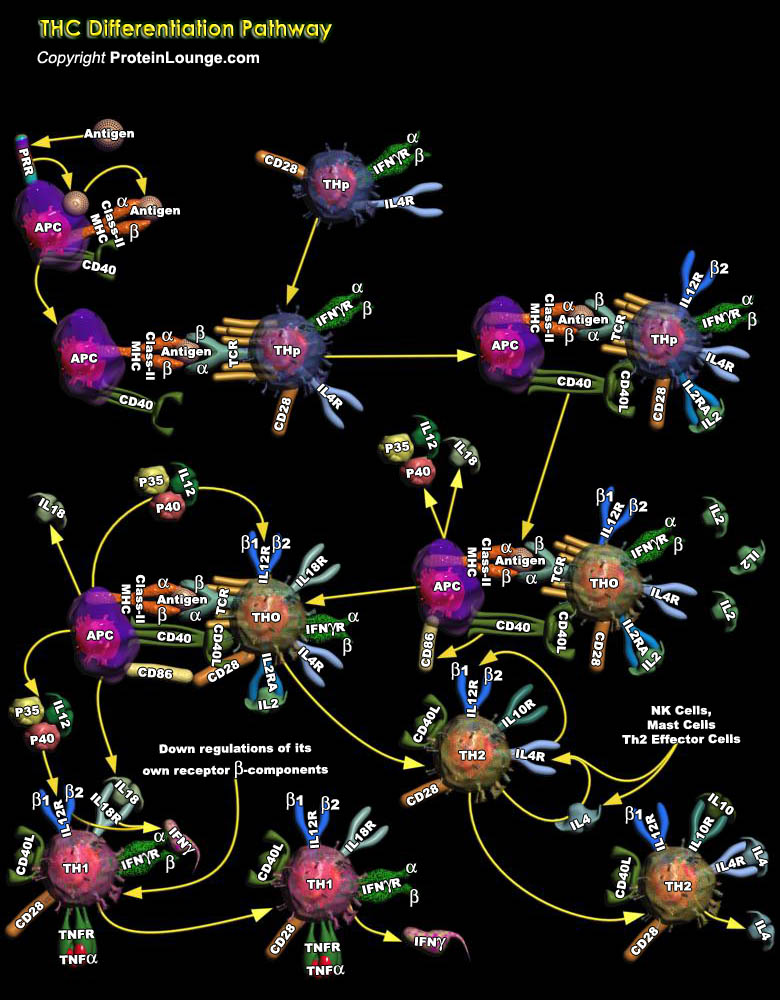
During infection, T and B-lymphocytes recognize microbes by means of antigen-specific cell-surface receptors. The humoral immune response is mediated by B cells and the antibodies they produce. T-lymphocyte response to antigenic challenges is called the cellular immune response. T-lymphocytes can be categorized and functionally divided into CD4+ (T-helper lymphocytes) cells and CD8+ (cytotoxic T-lymphocytes) by the type of antigen receptors and a small number of accessory markers on their cell surface. There are three different classes of CD4+ T-lymphocytes, or helper T cells: TH1, TH2 and TH3) (Ref.1). The abbreviations TH1 (T-helper Cell type 1) and TH2 (T-Helper Cell type 2) refer to CD4+ alpha-beta TCR T-Cell subsets that provide help to cells of both the innate[..]

